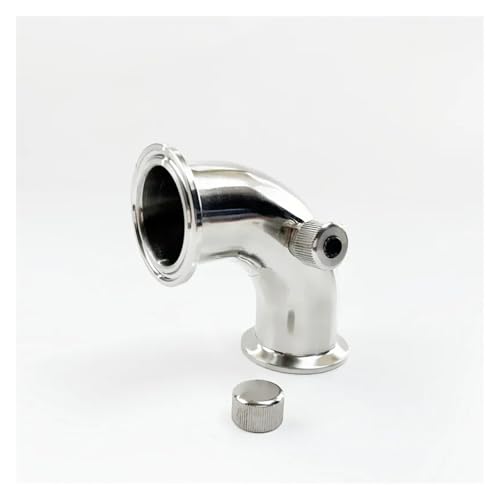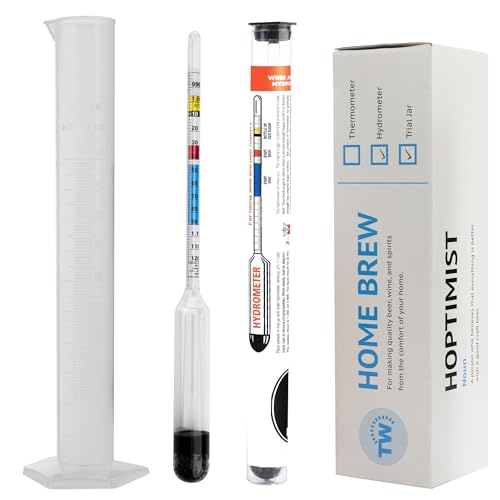That's all I do. Just a thought.Hmm I don't, I just let it pour in from the kettle to fermenter.
You are using an out of date browser. It may not display this or other websites correctly.
You should upgrade or use an alternative browser.
You should upgrade or use an alternative browser.
Issues with Wyeast
- Thread starter Pennine
- Start date

Help Support The Homebrew Forum:
This site may earn a commission from merchant affiliate
links, including eBay, Amazon, and others.
Well a good splashy pour is a very good way to aerate the wort to be honest :-)That's all I do. Just a thought.
That's what I do (as probably many here). I did however wonder on my last brew if aerating hot (say around 80oC) makes any difference than when cooler (when at pitching temperature). I guess not and there is enough oxygen present, but I had a quick doubt so did it again when cool! Do you generally aerate hot or cold?Well a good splashy pour is a very good way to aerate the wort to be honest :-)
Oh, I suppose my method at the moment may differ from others as I don't cool using a coil/chiller, so I pour the hot wort into a bucket to then cool in a water bath.That's what I do (as probably many here). I did however wonder on my last brew if aerating hot (say around 80oC) makes any difference than when cooler (when at pitching temperature). I guess not and there is enough oxygen present, but I had a quick doubt so did it again when cool! Do you generally aerate hot or cold?
That makes it over 5 months old which for a lager yeast is unusable without building back the cell count as you found out unfortunately.All of them within the dates the most recent use by was 23/8 and I brewed last weekend.
You needed 180bn cells for a normal lager pitch rate. You pitched 30bn according to the calculators.
Last edited:
Wyeast packs have worked really well for me. Personally I think their california ale strain (1056) is cleaner and superior to the White Labs (WLP001) and dry Fermentis (US-05) versions. I’ve had cleaner fermentations, and the hops just ‘pop’ that bit more with 1056.
I always make a starter, and for clean fermentations I prefer to sit at the higher end of an estimated pitching rate,
I always make a starter, and for clean fermentations I prefer to sit at the higher end of an estimated pitching rate,

£11.95
£14.99
FOR THE LOVE OF HOPS (Brewing Elements): The Practical Guide to Aroma, Bitterness and the Culture of Hops
Amazon.co.uk

£6.99
Stevenson Reeves Triple Scale Hydrometer (S1011) For Home Brewing and Winemaking
Medi Exchange

£63.25
Sanitary clamp 1.5" (38mm) OD50.5mm Sanitary Tri-Clamp 90-Degree Pipe With Nipple And Electronic Thermometer, Stainless Steel 304 Home brewing(Without Thermometer)
DAN CHENG XIAN PENG SHI DA SHANG MAO DIAN

£11.95
£14.99
WATER COMPREHENSIVE GUIDE (Brewing Elements): A Comprehensive Guide for Brewers
Amazon.co.uk

£7.99
£14.99
Craft Brew: 50 homebrew recipes from the world's best craft breweries
Sarahs Bookshop UK

£12.77
£14.99
Brew it Yourself: Make Your Own Beer, Wine, Cider and Other Concoctions
Amazon.co.uk

£17.95
£24.95
DIAH DO IT AT HOME Fermenter 30l Fermentation Bucket with Tap, Airlock, Lid, and Bung, Homebrew Wine Making
do-it-at-home

£14.25
£18.99
How to Brew: Everything You Need to Know to Brew Great Beer Every Time
Amazon.co.uk

£63.25
HJBFZZBD Sanitary clamp 1.5" (38mm) FlangeOD50.5mm Sanitary Tri-Clamp 90-Degree Pipe With Middle Nipple And Electronic Thermometer, Stainless Steel 304 Home brewing(Without Thermometer)
DAN CHENG XIAN PENG SHI DA SHANG MAO DIAN

£9.99 (£199.80 / kg)
Lalvin EC-1118 Wine Yeast (10 Pack) - Champagne Yeast - Make Wine Cider Mead Kombucha At Home - 5 g Sachets - Saccharomyces cerevisiae - Sold by CAPYBARA Distributors Inc.
CAPYBARA Distributors Inc. (UK)

£14.76
Digital Temperature Watch Heating Thermometer Home Brewing Tools for Wine Bottle
B&D DIRECT STORE

£15.78
Banziaju Wine Making Supplies, 18" Auto Siphon Hose For Water Homebrew Siphon Pump With Tubing And Clamp Clear Wine Siphon For Beer Wine Making Kit
Jian Shi Xian Chao Mei Shang Mao You Xian Gong Si

£15.96
£16.99
The Brew Your Own Big Book of Clone Recipes: Featuring 300 Homebrew Recipes from Your Favorite Breweries
Amazon.co.uk

£7.00 (£70.00 / kg)
£7.25 (£72.50 / kg)
Youngs Multi Purpose Dried Active Yeast
TMJ.DISTRIBUTIONS
Pennine
Landlord.
- Joined
- Dec 21, 2019
- Messages
- 2,892
- Reaction score
- 4,426
Seems like it, I am just curious why but started then stopped after fermenting about 10 gravity points.That makes it over 5 months old which for a lager yeast is unusable without building back the cell count as you found out unfortunately.
You needed 180bn cells for a normal lager pitch rate. You pitched 30bn according to the calculators.
I probably should have read this too.
17. I’m brewing a lager, do I need to cool my wort to fermentation temperature before adding the yeast?
There are different views on this topic. The individual brewer ultimately has to weigh the pros and cons. If a brewer is to pitch the lager yeast at fermentation temperature (55 °F/ 12 °C and below) then the pitch rate needs to be increased and a slower start to fermentation should be expected. The other option is to pitch the yeast into wort (60-70 °F/ 15-21 °C) and maintain temperature for 24 hours or until signs of active fermentation are evident and then cool to desired fermentation temperature.
Anyway I think I will stick with Imperial or propogate for liquid yeast this one takes too much babysitting. It's nice to have a higher starting cell count for the exact same price.
- Joined
- Mar 6, 2019
- Messages
- 7,985
- Reaction score
- 10,760
I had to do this in my latest Munich dunkel. It was yeast slurry I had a while in the fridge. I made a small starter for 24hrs then pitched the lot. I had to ramp up to 18 to get it going, then back down to 12.Seems like it, I am just curious why but started then stopped after fermenting about 10 gravity points.
I probably should have read this too.
17. I’m brewing a lager, do I need to cool my wort to fermentation temperature before adding the yeast?
There are different views on this topic. The individual brewer ultimately has to weigh the pros and cons. If a brewer is to pitch the lager yeast at fermentation temperature (55 °F/ 12 °C and below) then the pitch rate needs to be increased and a slower start to fermentation should be expected. The other option is to pitch the yeast into wort (60-70 °F/ 15-21 °C) and maintain temperature for 24 hours or until signs of active fermentation are evident and then cool to desired fermentation temperature.
Anyway I think I will stick with Imperial or propogate for liquid yeast this one takes too much babysitting. It's nice to have a higher starting cell count for the exact same price.
The only difference I think would be that the solubility of gas into cold wort is much higher, so ideally you’d give it a good slosh about after coolingOh, I suppose my method at the moment may differ from others as I don't cool using a coil/chiller, so I pour the hot wort into a bucket to then cool in a water bath.

I only ever make starters for high gravity beers and I’ve never had a problem with any liquid or dried yeast. I do whip the wort into submission at the time of pitching every time regardless of whether I should need to, I believe it helps the yeast get off to a good start.
It is possible that when pitching into unaerated wort the lag phase takes longer. I wonder if it might even be possible that because of a lack of oxygen you end up with a low cell count?
It is possible that when pitching into unaerated wort the lag phase takes longer. I wonder if it might even be possible that because of a lack of oxygen you end up with a low cell count?
Does anyone else find that when doing the aforementioned “good splashy pour” from the kettle/chiller into the FV, a massive foamy head quickly develops? I often find myself having to scrape it back to get some clear surface to pitch into…
Yup. Me too.Does anyone else find that when doing the aforementioned “good splashy pour” from the kettle/chiller into the FV, a massive foamy head quickly develops? I often find myself having to scrape it back to get some clear surface to pitch into…
Pennine
Landlord.
- Joined
- Dec 21, 2019
- Messages
- 2,892
- Reaction score
- 4,426
Yeah it's a great suggestion, I know for dried yeast it's unnessecary per the manufacturers but liquid it's definitely something I will start doing.I only ever make starters for high gravity beers and I’ve never had a problem with any liquid or dried yeast. I do whip the wort into submission at the time of pitching every time regardless of whether I should need to, I believe it helps the yeast get off to a good start.
It is possible that when pitching into unaerated wort the lag phase takes longer. I wonder if it might even be possible that because of a lack of oxygen you end up with a low cell count?
I usually don't have issues with my smaller batches so rarely ever make a starter. I also think dry yeast is so easy to use now and between fermetis and llalemand you have so many choices it's hard to see the value in liquid yeast anymore unless you want a specific oddball strain, or a belgian trappist style yeast. There isn't a good substitute for them yet.
Pennine
Landlord.
- Joined
- Dec 21, 2019
- Messages
- 2,892
- Reaction score
- 4,426
Yep same here, it's actually why I always rehydrated dry yeast so they don't get stuck on the bubbles and get into the wort.Does anyone else find that when doing the aforementioned “good splashy pour” from the kettle/chiller into the FV, a massive foamy head quickly develops? I often find myself having to scrape it back to get some clear surface to pitch into…
That's a really interesting idea, I'd never thought to check their catalogue(s). I see that Lallemand has an 'English Style Ale Yeast' (perhaps they have other more specific ones too). I have to admit I do get a certain kick out of using e.g a West Yorkshire vs. London III vs. Ringwood etc depending on what I'm brewing - but I wonder how much difference I would really detect in practice. I suppose I should do split batch to compare...I also think dry yeast is so easy to use now and between fermetis and llalemand you have so many choices it's hard to see the value in liquid yeast anymore unless you want a specific oddball strain, or a belgian trappist style yeast.
Similar threads
- Replies
- 10
- Views
- 823
- Replies
- 13
- Views
- 2K
- Replies
- 17
- Views
- 2K








![BREWING THERMOMETER STICKERS ACCURATELY MONITOR FERMENTING BEER & WINE LIQUID TEMPERATURES 5PCS HOME BREW SPIRITS WINE LCD ADHESIVE [US]](https://m.media-amazon.com/images/I/311DDjo2X3L._SL500_.jpg)


















